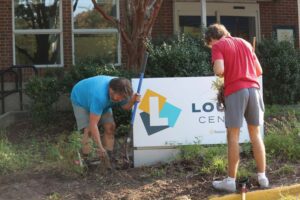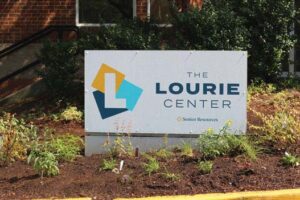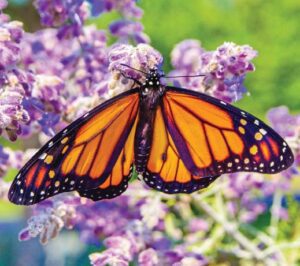
Chris Wormley and Rhett Allord weed and prepare the soil for the Lourie Center’s Monarch Waystation.
As the fourth generation of the eastern population of monarch butterflies migrate from and through Columbia en route to overwintering grounds in the Oyamel fir forests in the transvolcanic mountain range west of Mexico City, they have a new ‘pit stop’ for resting and nectaring—a Monarch Waystation in downtown Columbia.
Initiated in 2005 by Monarch Watch, Monarch Waystations are places providing nectar plants to sustain and fuel the monarch’s fall migration. They also provide milkweed host plants in spring and summer for female monarchs to lay eggs under the leaves and monarch caterpillars to feed and grow on before pupating and becoming adult butterflies. Waystations provide shelter from predators and the elements as well with dense plantings of milkweeds and nectar plants.
In Fall of 2024 I taught a four-week course at The Lourie Center entitled Transforming Gardens Into Butterfly Habitats with a focus on planning and planting habitat for the life cycle of monarch butterflies. Installing a Monarch Waystation on site in a sunlit spot was to be a culminating activity for participants.
Becky Morrison, director of Development for Senior Resources, submitted a grant to Columbia Green for host and nectar plants, soil amendments, and fertilizers for the waystation location. Richland County Master Gardener Dot Valentine submitted a soil sample to Clemson’s upstate soil lab for analysis. Columbia Green awarded the grant to The Lourie Center near the end of 2024.
This fall we purchased native milkweed host plants, Asclepius tuberosa, and native nectar plants from Prairie Nursery in Westfield, Wisconsin and native nectar plants from Lori Watson’s Millcreek Greenhouses in Columbia, including Agastache, Boltonia asteroids, Coreopsis, Cuphea, Echinacea, New England Aster, Rudbeckia ‘American Gold Rush’, and Solidago. A three-season palette of blooming native plants provides continuous nectar for adult monarchs and milkweed for monarch caterpillars.
Avoid purchasing plants that have been sprayed by the grower or nursery. The most likely insect to affect this garden is the orange Oleander aphid on milkweed in spring and summer. Spraying aphids with a water hose removes them easily as does crushing with your fingers. Beneficial insects like ladybugs remove them as well.
Since fall is the best time to plant perennials, last Saturday morning three volunteers—Chris Wormley, garden instructor at Sachelford Elementary School and grants coordinator for Columbia Green; Rhett Allord, USC student and Service Saturday volunteer;
David Fleming, facilities manager at The Lourie Center; and I weeded the 12’ x 12’ garden site, prepared the soil, added Clemson’s soil test recommendations, installed the pollinator plants, mulched, and watered the Monarch Waystation.
In the future we hope to be able to catch, tag, and release migrating monarchs during fall migration at The Lourie Center waystation.
For more information on Monarch Waystations, visit https://www.monarchwatch.org/waystations/.





Loading Comments